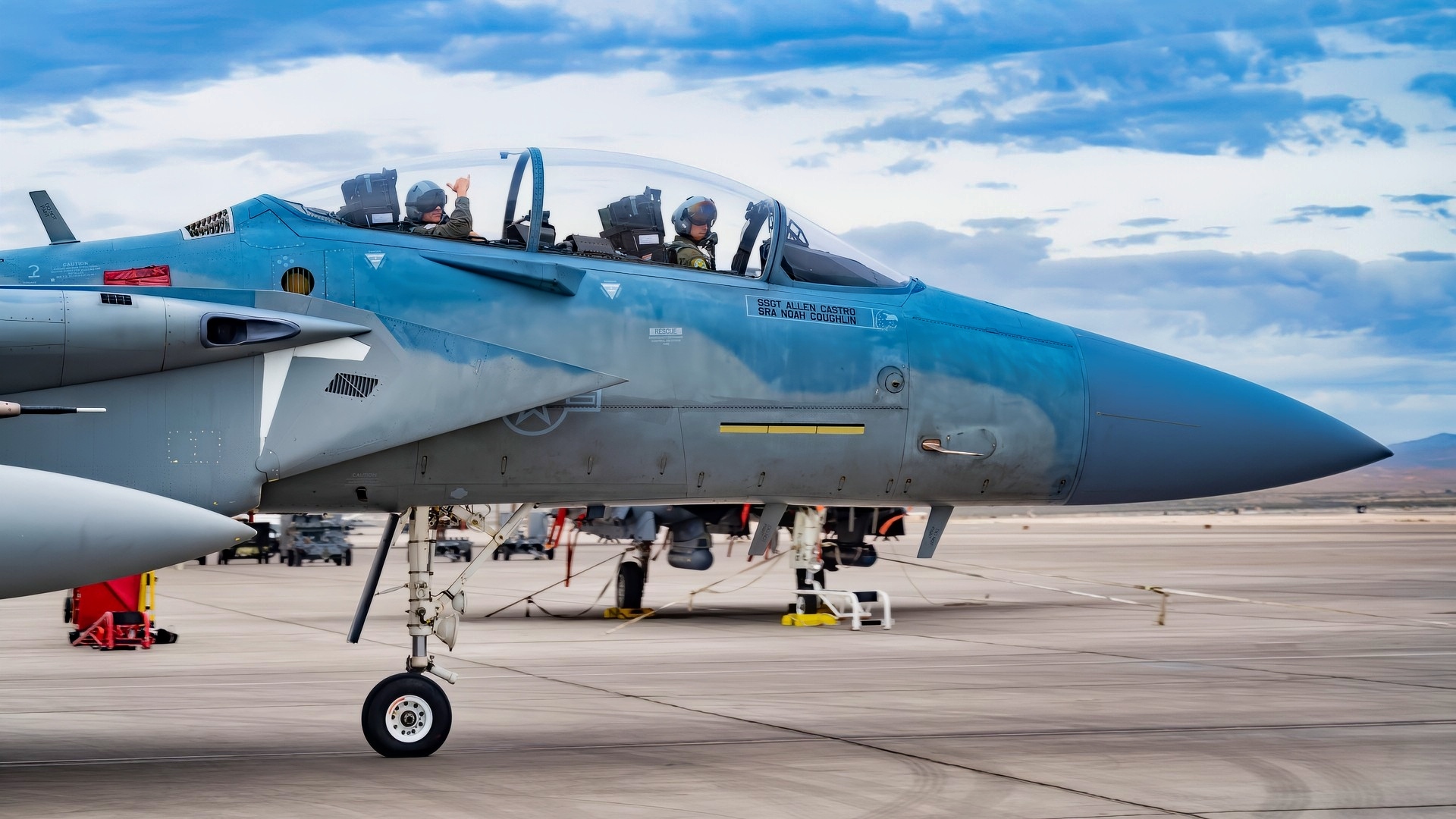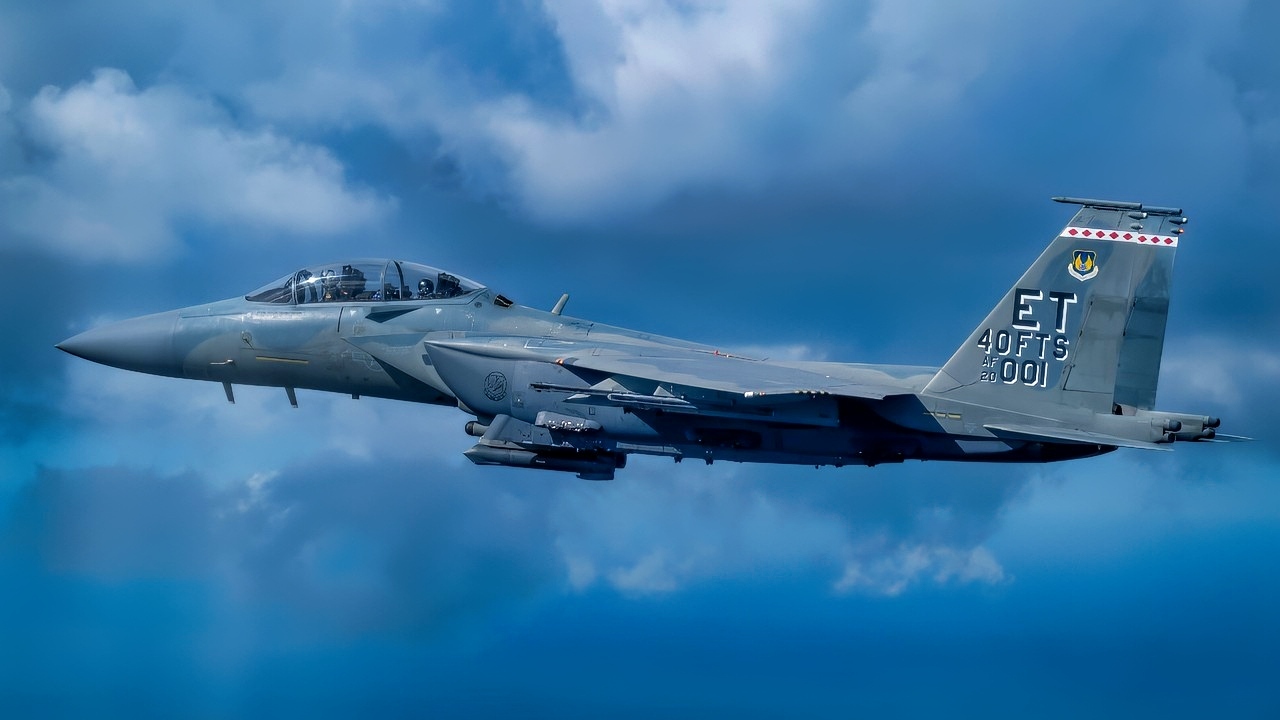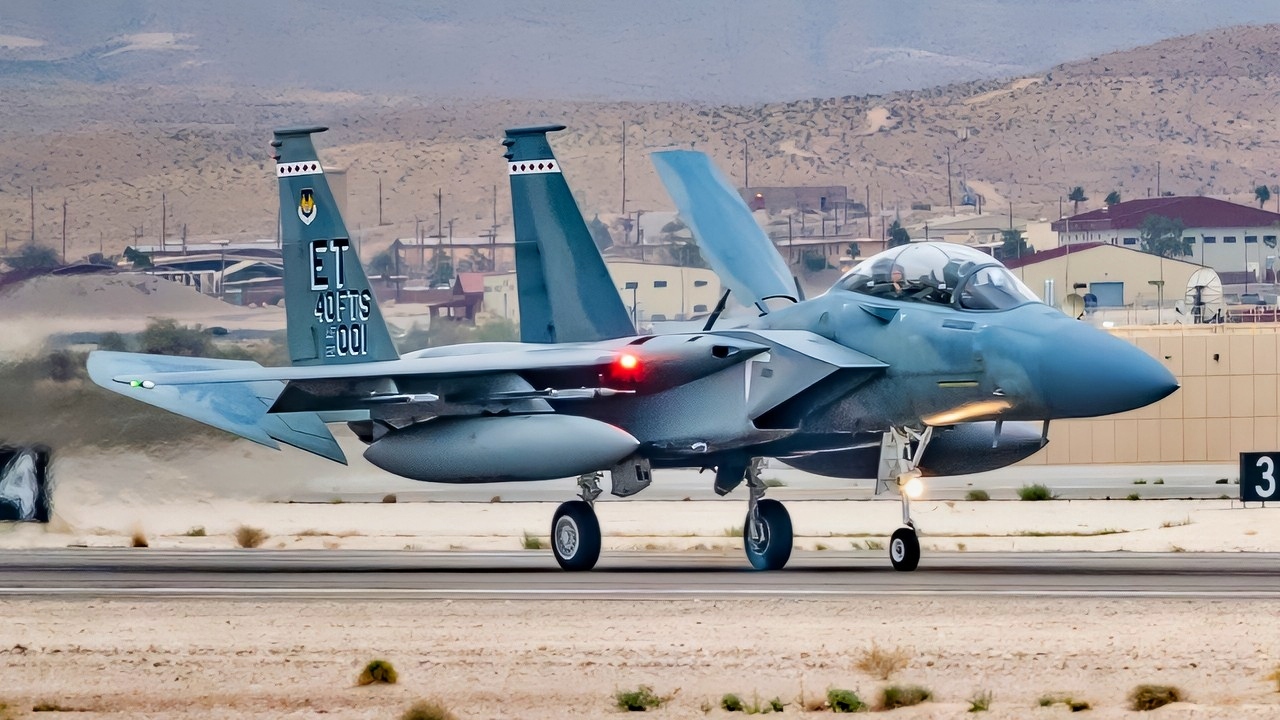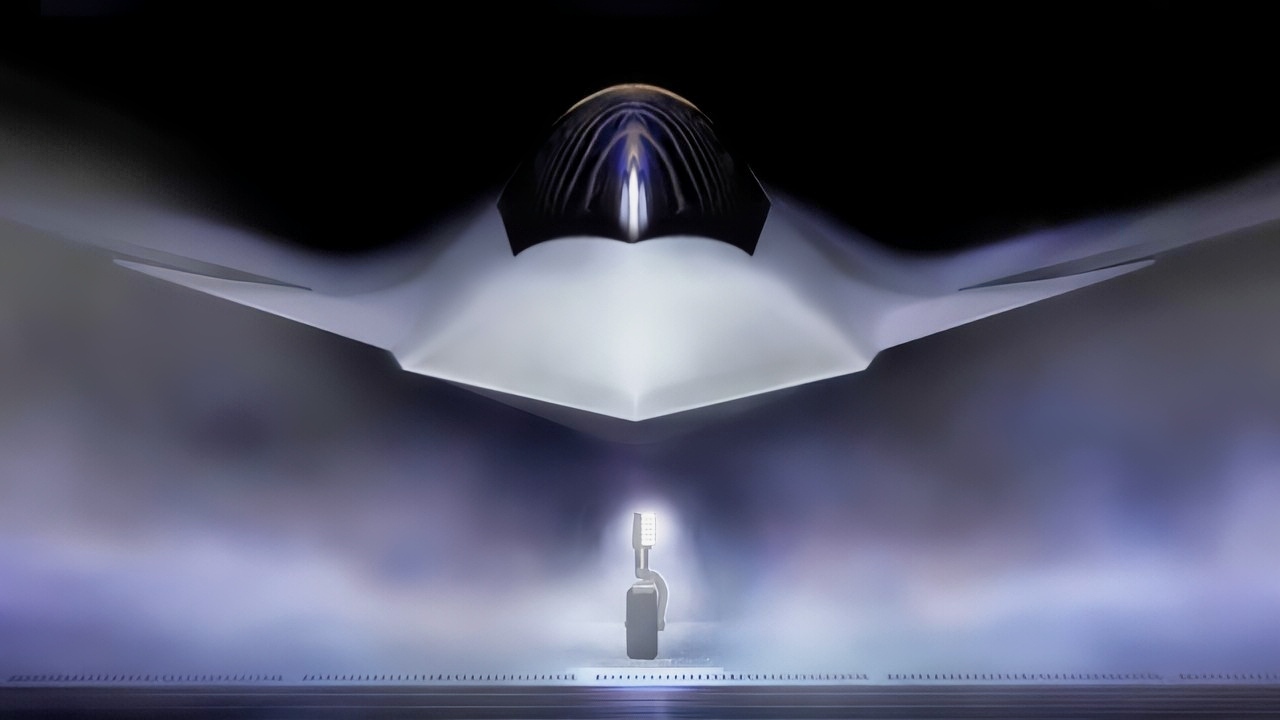Key Points and Summary – The two-month-long strike at Boeing’s St. Louis facility is now officially delaying deliveries of new F-15EX fighter jets to the Air Force, a top general confirmed in recent Senate testimony.
-Over 3,200 machinists remain on the picket line with negotiations at a standstill, and Boeing is now threatening to hire replacement workers.

U.S. Air Force Maj. Michael Tope, right, and Brig. Gen. Michael Rawls, taxis to the runway in a F-15EX Eagle II for a training operation at Nellis Air Force Base, Nevada, Nov. 15, 2023. The EX is the most advanced variant of the F-15 aircraft family, with the capability to carry a great number of missiles in support of the F-35A Lightning II. (U.S. Air Force photo by Airman 1st Class Elizabeth Tan)

A U.S. Air Force F-15EX Eagle II fighter jet assigned to Eglin Air Force Base, Florida, flies near Jacksonville, Florida, Nov. 2, 2024. Airmen from the 40th Flight Test Squadron and 96th Aircraft Maintenance Unit supported a flyover for the annual Florida-Georgia college football game. (U.S. Air Force photo by Staff Sgt. Blake Wiles)
-While the company has downplayed the strike’s impact on the next-generation F-47 program, a protracted dispute could still cause future delays and cost overruns for the critical sixth-generation fighter.
How Will The Boeing Strike In St. Louis Affect Military Aircraft Production? Ask F-15EX Eagle II
The ongoing strike at Boeing’s St. Louis facility is causing delays in the delivery of new fighter jets to the U.S. Air Force.
The roughly 3,200 members of the International Association of Machinists and Aerospace Workers began their strike on Aug. 4, and the Air Force has publicly acknowledged the strike’s impact for the first time. Delays are affecting the delivery of Boeing’s newest F-15EX fighter aircraft, which are built in the St. Louis facility.
In written testimony to the U.S. Senate Armed Services Committee, Air Force Gen. Kenneth Wilsbach confirmed the strike has pushed back deliveries of the F-15EX. The Air Force has received the first full batch of planes, but only half of the next group has been delivered so far.
The Strike Will Impact Overseas Shipments Next Year
The strike, which has now run longer than two months, has implications beyond the St. Louis area.
The Air National Guard in Portland, Oregon, is among those affected, and there are concerns about potential effects on next year’s overseas shipments.
The strike not only slows F-15EX production rates but may also further damage the reputation of the aircraft manufacturing giant.
Although Boeing is able to continue some operations, some programs, such as Joint Direct Attack Munitions, have returned to pre-strike production levels; however, the overall effects are being keenly felt.
Both Sides Reject Offers From Each Other
The 3,200 Boeing workers are on strike after rejecting two contract offers. Boeing’s latest proposal includes a 24 percent pay increase over five years and a $4,000 bonus.
In a rare move, members of the International Association of Machinists and Aerospace Workers Local 837 proposed a 20 percent increase and a $10,000 bonus, in addition to raises for longtime employees.

An F-15EX Eagle II lands on the flight line after a training operation at Nellis Air Force Base, Nevada, Nov. 15, 2023. The aircraft is able to fly at a speed of Mach 2.5, constituting it as the world’s fastest fighter jet. (U.S. Air Force photo by Airman 1st Class Elizabeth Tan)
Reuters reported that the IAM’s proposed offer builds on proposals from Boeing Defense, adding a larger ratification bonus than what management offered, heftier company contributions to the retirement plan, and steeper wage increases for workers at the hourly wage ceiling.
The union proposal would match the retirement contributions and bonus won last year by other unionized machinists at Boeing.
“Our members have spoken loudly – we are ready to return to work once Boeing accepts this agreement,” IAM District 837 President Tom Boelling said in a released statement. “It’s up to the company to get our members back to what they do best: building world-class aircraft for our nation’s defense.”
Boeing Moving On From Union Strikers
With no end in sight for the union’s strike, Boeing is signalling that it is preparing to move on and hire replacements for the union members on strike.
Dan Gillian, Boeing’s vice president of Air Dominance and senior executive at the St. Louis site, said that the company is already interviewing prospective replacement workers for union jobs.
“We’ve had our first hiring event. We’ve received hundreds of qualified applicants. We’re working through that now,” he said in a September interview at the Air Force Association’s Air, Space and Cyber conference.
“I won’t comment on specific job codes,” he added, “but we do think that based on the protracted nature of the strike, and per our contingency plans, now is the time to be making some of these decisions to begin bringing on additional staff.”
Beyond F-15EX: How Does The Strike Affect The F-47?
While Boeing has admitted the ongoing delays concerning the F-15EX, not much has been said about the new, sixth-generation F-47 stealth fighter.
Boeing has downplayed the strike’s possible effects on the F-47.
“The order of magnitude of this is much, much less than last year’s Seattle strike of 30,000 workers,” Boeing CEO Kelly Ortberg said. “I wouldn’t worry too much about the implications of the strike. We’ll manage our way through that.”

Shown is a graphical artist rendering of the Next Generation Air Dominance (NGAD) Platform. The rendering highlights the Air Force’s sixth generation fighter, the F-47. The NGAD Platform will bring lethal, next-generation technologies to ensure air superiority for the Joint Force in any conflict. (U.S. Air Force graphic)

Shown is a graphical artist rendering of the Next Generation Air Dominance (NGAD) Platform. The rendering highlights the Air Force’s sixth generation fighter, the F-47. The NGAD Platform will bring lethal, next-generation technologies to ensure air superiority for the Joint Force in any conflict. (U.S. Air Force graphic)
However, the strike is closing in on 75 days, and Fox Business wrote on Aug. 4, “While this strike involves a far smaller workforce and began before full F‑47 production, it still threatens delays and cost overruns as Boeing ramps up investment in the F‑47—including a major expansion of its St. Louis production line,” adding that, “a delay could force rescheduling of testing, supply chain deliveries, and depot work, even if the strike ends swiftly.”
A delay in the F-47, the centerpiece of the Next Generation Air Dominance Program, could stall the entire NGAD program, pushing back the integration of supporting systems such as loyal wingman drones and AI software.
In March 2025, Boeing was awarded the contract to design and build the F-47, with the program’s focus being a “family of systems” that includes the manned fighter, autonomous drones known as Collaborative Combat Aircraft, and other advanced technologies.
About the Author: Steve Balestrieri
Steve Balestrieri is a National Security Columnist. He served as a US Army Special Forces NCO and Warrant Officer. In addition to writing on defense, he covers the NFL for PatsFans.com and is a member of the Pro Football Writers of America (PFWA). His work was regularly featured in many military publications.
More Military
The U.S. Army’s Big M10 Booker ‘Light Tank’ Mistake Still Stings
The U.S. Navy Built Two Versions of the Littoral Combat Ship. Both Were a Mess.
The EA-18G Growler Has A Message for the U.S. Navy
Warship Goes Down Below the Waves: Navy F/A-18F Fighter Fires A Stealth Munition










